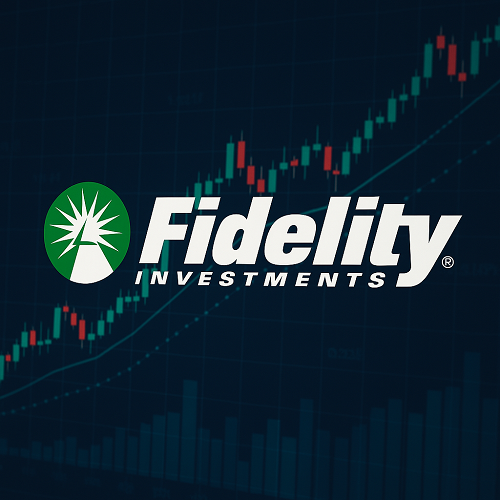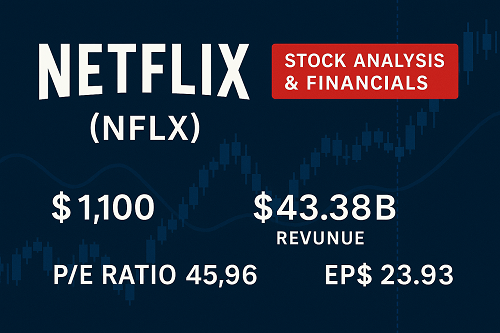Fidelity Investments has grown from a single fund to one of the largest asset-management and brokerage firms globally, offering services across retail, retirement, institutional and increasingly digital-assets landscapes. With the rise of low-cost investing, the push into crypto, and ongoing regulatory shifts, Fidelity is positioned at a strategic inflection point.
For investors and advisors alike, understanding what Fidelity is doing today, how it competes, and how it is evolving offers insight into the broader asset-management industry and the growing intersection with digital/trading markets.
Company Profile & Key Facts
- Name: Fidelity Investments (technically the flagship business of its parent firm, FMR LLC)
- Founded: 1946 (as Fidelity Management & Research) in Boston, Massachusetts.
- Headquarters: Boston, MA, USA.
- Assets under management (AUM): Trillions of dollars; one estimate ~US$5.8 trillion in discretionary assets under management and US$15 trillion in assets under administration (2024)
- Ownership: Partially family-owned (the Johnson family) and partially by current & former executives.
- Key person: Abigail Johnson (CEO since 2014)
These base facts show why Fidelity is a major player—size, scope, legacy, and access to multiple market segments.
Historical Evolution: From 1946 to Now
Origins & Growth
- The firm was founded by Edward C. Johnson II, who incorporated The Fidelity Fund in 1930; the corporate structure became Fidelity Management & Research in 1946.
- In 1969, Fidelity formed an international division, Fidelity International Limited (FIL) for non-US markets, which was spun off in 1980 into an independent entity.
- Over the decades, Fidelity pioneered many firsts: mutual funds check-writing, same-day trading of fund shares, early online fund information.
Milestones in Innovation & Expansion
- Entered 401(k) services in 1982.
- Launched first ETF by Fidelity in 2003 (the Fidelity Nasdaq Composite Index Tracking Stock Fund – ONEQ)
- In 2018, launched Fidelity Digital Assets, marking its institutional crypto custody/trading arm.
- In recent years, has introduced zero-fee funds and engaged aggressively in digital transformation.
Implications
Fidelity’s history shows a deliberate shift from mutual-fund powerhouse to diversified financial services firm with brokerage, wealth-management, institutional and digital-asset capabilities. That broadening matters—especially for traders, advisors and crypto/institutional players.
Business Segments & Product Offerings
Here’s a detailed breakdown of what Fidelity offers and why each segment matters.
4.1 Retail Brokerage & Wealth Management
- Offers commission-free online U.S. stock trades, no account minimums for retail brokerage accounts.
- Wealth management services for high-net-worth clients; also robo-advisory offerings (e.g., Fidelity Go) which have seen growth.
- Educational resources, intuitive digital experiences, and integrated tools for day-to-day investing and longer-term wealth building.
Why this matters: For traders and self-directed investors, Fidelity provides a one-stop platform (trading, research, total-account view). For marketers, as you are, it’s interesting to see how Fidelity tailors digital journeys for these segments.
Mutual Funds & Exchange-Traded Funds (ETFs)
- Fidelity manages a large family of mutual funds and increasingly ETFs.
- Example: The renowned Fidelity Magellan Fund (once managed by Peter Lynch) which achieved record returns in its time (averaged ~29% annual return from 1977-90).
- Fidelity also emphasizes low-cost funds, index funds, and transparent pricing.
Relevance: For someone trading or investing, understanding Fidelity’s fund arm offers insight into where they pull liquidity, how funds interact with markets, and their product mix (active vs passive).
Institutional, Clearing, Custody & Advisory Services
- Fidelity offers institutional services: clearing & custody for other broker-dealers, back-office support, technology platforms for advisors & institutions.
- Fiduciary services to employers and retirement-plan sponsors.
Why it matters: This gives Fidelity scale, internal data advantages and cross-segment leverage—factors that matter for competitive strategy in the asset-management and brokerage space.
Retirement Plans & 401(k)/Employer Services
- Fidelity manages retirement-savings programs for tens of thousands of businesses — e.g., employer benefits, 401(k) plans, 529 college savings.
Implication for traders/advisors: The retirement channel drives large, recurring asset flows, which underpins Fidelity’s base. For your programmatic supply or publisher-service insights, understanding how these flows work can highlight trends in investor behavior and asset shifts.
Digital Assets & Crypto: The Next Frontier
- Fidelity established Fidelity Digital Assets in 2018 to serve institutional clients in crypto custody/trading.
- It filed/participated in launching spot Bitcoin ETFs (e.g., as of Jan 2024) and spot Ethereum ETFs (July 2024) in the U.S. market.
- More recently, Fidelity has been reported to test a dollar-pegged stablecoin via its digital-assets arm (March 2025).
Why this matters for traders: Fidelity is bridging traditional finance with crypto. For a trader or content-creator, understanding how a major asset manager enters and influences crypto markets is critical. This overlaps with programmatic advertising opportunities (crypto exposure + investor education content + digital assets adoption).
Competitive Positioning & Strengths
Here are Fidelity’s major strengths and what helps it compete in the marketplace.
Scale & Diversification
With trillions of dollars in AUM and assets under administration, Fidelity can leverage scale for cost efficiencies, negotiated access to markets, technology investment and service breadth.
Brand & Trust
Fidelity is a trusted brand among retail investors and institutions. The legacy, long-term ownership structure (family + employee ownership) provides continuity and investor confidence.
Innovation & Digital Experience
- Early adopter of online trading and digital investor tools.
- Leading in no-minimums, zero-commission trades, zero-fee funds (for certain products) which appeals to younger investors/traders.
- Rapid shift into crypto/digital assets positions it ahead of many traditional firms.
Institutional Infrastructure
Fidelity’s back-office, clearing, custody, technology and retirement services provide a moat. It’s not just a retail brokerage—it services large institutions, wealth managers and employers.
Cross-Segment Asset Flows
Because Fidelity spans retail, institutional, retirement, advisory and digital-assets, it has multiple touch-points for capital inflows and can cross-sell services.
Marketing & Content-Leverage Opportunities
For someone in advertising media (like you), note that Fidelity’s brand touches many verticals: self-directed traders, retirement plan sponsors, wealth management clients, institutional investors, fintech/crypto. Each vertical offers content and media opportunities (ads, influencers, programmatic, affiliate marketing).
Risks, Controversies & Governance Issues
Understanding the risks and past controversies helps readers evaluate Fidelity more critically.
Conflicts of Interest
An investigation by Reuters (2016) found cases where Fidelity’s venture-capital arm (F‑Prime Capital Partners) made pre-IPO investments later bought by Fidelity mutual funds, raising possible conflicts of interest.
Regulatory Fines & Misconduct
- In 2004, the U.S. SEC charged Fidelity Brokerage with document-alteration issues and Fidelity paid ~$2 million to settle.
- In 2007, NASD fined four broker-dealers affiliated with Fidelity ~$3.75 million for supervision/e‐mail retention violations.
- More recently (2025), FINRA fined Fidelity ~$600,000 for lax supervision after an employee stole ~$750,000 from clients over eight years.
Rapid Market & Digital Asset Risks
Fidelity’s push into crypto and digital-asset products introduces new risks: regulatory uncertainty, technology/security risks, market volatility and reputational risks.
Competitive Pressure & Fee Compression
As major players (e.g., Vanguard Group, BlackRock Inc., robo-advisors, fintech challengers) push fees lower and user expectations rise, Fidelity must continue to innovate or risk margin erosion.
What It Means for Investors, Advisors & Traders
For Retail Investors & Self-Directed Traders
- Fidelity offers a robust platform: low-cost trades, research, a wide product set (stocks, ETFs, mutual funds, options, crypto).
- The inclusion of digital assets means more access to crypto investments via a trusted institution (useful if you’re shifting some trading into crypto).
- For your media business, content aimed at “how to trade crypto via Fidelity” or “was the Bitcoin ETF launch by Fidelity worth it?” could be high value.
For Advisors & Institutional/Publisher Clients
- If you as a marketer are servicing ad-ops for financial publishers, know that Fidelity’s institutional services mean that publishers targeting RIAs (registered investment advisors), fintech decision-makers, retirement-plan sponsors could allocate to Fidelity-branded assets.
- Fidelity’s technology services and clearing/custody offerings mean that underlying infrastructure for ad campaigns (retargeting, data platforms, affiliate marketing) might align with Fidelity’s market entry strategies—an angle to explore for your ad-ops service.
For Crypto/Trading-Market Audiences
- Fidelity’s move into spot Bitcoin and Ethereum ETFs, and exploring stablecoin issuance, means the traditional asset-management sector continues to integrate with crypto markets.
- For your YouTube channel (off-grid cabin + spending time exploring digital finance), “Why Fidelity is betting on digital assets” could be a compelling video.
- Traders looking for institutional signals: when Fidelity moves into digital assets, it can mean increased liquidity, new product launches and potentially trading-opportunity events (e.g., ETF listings, regulation changes).
Outlook & Strategic Priorities for 2025-2030
Here are the key strategic areas where Fidelity is likely to focus and where investors/traders should pay attention:
Continued Digital-Asset Expansion
With Fidelity testing a dollar-pegged stablecoin (March 2025) and launching spot crypto ETFs, the company is moving deeper into tokenised finance.
Enhanced Technology & Client Experience
Fidelity is investing heavily in its digital platform (mobile, robo-advisors, integrated experience). The trend toward zero-fees, transparent pricing and seamless onboarding will continue to reduce barriers to entry for new investors.
Retirement & Employer Services
As demographics shift and younger generations enter the workforce, Fidelity will continue to target retirement-plan clients and offer more flexible investment options, including crypto exposure in 401(k)s.
Fee-Compression Mitigation
To maintain margins in a low-fee world, Fidelity will likely lean into value-added services: advisory, wealth-management, institutional tech, data/insights, and cross-sell services (e.g., retirement + brokerage + fintech).
Global & ESG Considerations
While Fidelity’s U.S. operations dominate, global expansion (especially in digital assets) and ESG (environmental, social, governance) themes may influence product development and marketing (e.g., sustainable ETFs, impact investing).
Implication for Trading & Advertising
- New product launches (e.g., crypto ETFs, token-based funds) create media attention and content cycles—opportunities for timely content and advertising campaigns.
- As Fidelity increases digital engagement, ad-ops opportunities (affiliate, influencer, programmatic) aligned to Fidelity’s target segments (young investors, retirement planners, crypto traders) will increase.
Frequently Asked Questions (FAQ)
Q: Can I trade cryptocurrency via Fidelity?
A: Yes. Fidelity offers cryptocurrency exposure (via its digital-assets arm) and spot crypto ETFs (e.g., Bitcoin, Ethereum) in certain markets. The firm has expanded into crypto custody and trading for institutional clients and now increasingly for broader investors.
Q: What makes Fidelity different from other brokerages like Vanguard or Robinhood?
A: Fidelity offers a combination of full-service wealth management, institutional capabilities, retirement/401(k) services, and digital/crypto services—while maintaining low cost and strong brand trust. It also integrates asset management and brokerage, giving it scale.
Q: Are Fidelity mutual funds still worth considering?
A: Yes, Fidelity continues to manage a large family of funds, including actively managed and index funds. However, as always, investors should evaluate fund fees, performance history, management team, and how it fits within their overall portfolio.
Q: What are the risks of using Fidelity for crypto trading?
A: While Fidelity brings institutional-grade infrastructure, the crypto space still carries higher volatility, regulatory risk, and technology/security risks. Any crypto exposure should be considered within the context of your broader risk tolerance and portfolio mix.
Q: How does Fidelity’s growth into digital assets affect traditional investing?
A: It signals that major asset-managers view digital assets as part of the mainstream investment ecosystem. This may drive more product innovation, regulatory changes and more opportunities (and risks) for investors and traders.
Conclusion
Fidelity Investments stands at a fascinating crossroads: rooted in decades of asset-management and brokerage history, while aggressively pushing into digital assets, crypto, tokenisation and digital-first investor experiences.
For traders, advisors, marketing professionals and digital-asset participants, understanding Fidelity’s strategy—and how it intertwines with investor behaviour, technology adoption and product rollout—offers a window into where the broader market is heading.
Whether you’re evaluating Fidelity as a platform for your own trading, exploring advertising opportunities around its segments, or simply monitoring the asset-management industry’s evolution into crypto and digital finance, there is much to learn from Fidelity’s journey.





 XAUT-USD
XAUT-USD  AMD
AMD  MARA
MARA  SHOP
SHOP  BULL
BULL  CL=F
CL=F